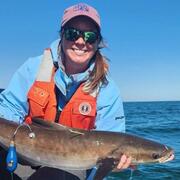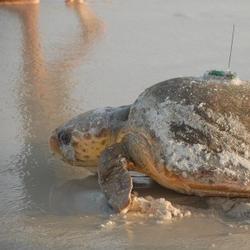A sea turtle mosaic made from the field station's broken floor tiles
A sea turtle mosaic made from the field station's broken floor tilesAfter Hurricane Michael obliterated Fish Inn, the sea turtle research team's field station, team members salvaged some of the building's floor tiles and made this sea turtle mosaic, which they plan to eventually install in a new field station.



















